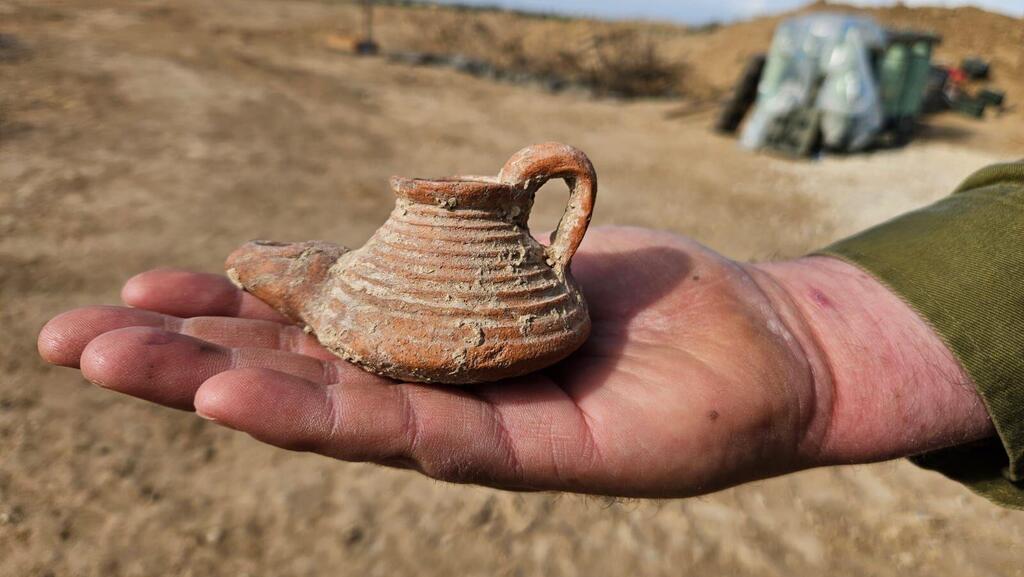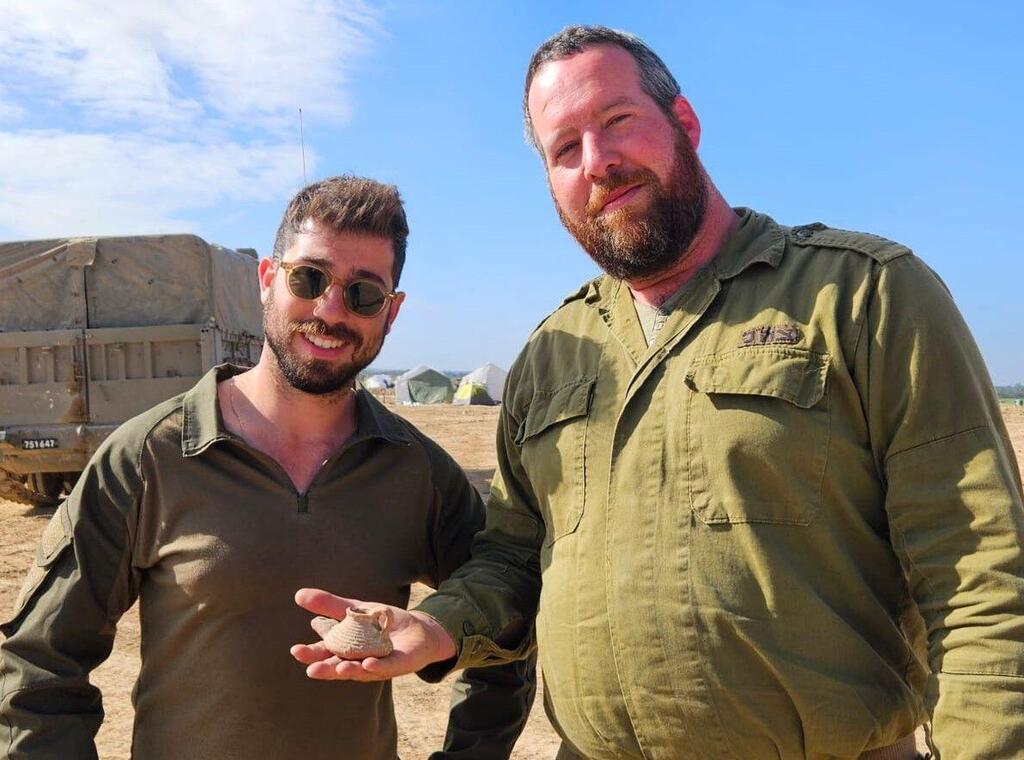Getting your Trinity Audio player ready...
IDF reservists find 1,500-year-old oil lamp near Gaza border while on patrol
(Video: Emil Eldjem, Antiquities Authority)
Netanel Melchior and Alon Segev, reservists in the 404th Battalion of the 282nd Fire Brigade, were prepared to serve their country patrolling the border with Gaza, but they did not expect to make an important archeological find. But the pair of soldiers discovered an oil lamp about 1,500 years old from the Byzantine period that was preserved intact. The soldiers showed exemplary citizenship and returned the candle to the Israel Antiquities Authority so that it could be properly preserved.
More stories:
"During one of our patrols in the field, I came across pottery lying upside down, and its round shape attracted me," said Melchior. "It was covered in mud; I cleaned it and after I realized what it was, I called the Antiquities Authority."
2 View gallery


1,500-year-old 'sand lamp' found by IDF reservists patrolling on Gaza border
(Photo: Sara Tal, Israel Antiquities Authority)
At the same time, Segev posted a photo of the lamp on Facebook, and sparking a great deal of interest. "The post gained momentum, it received dozens of comments and hundreds of likes. Surfers made various suggestions regarding the role of the artifact. There, too, they advised us to call the Antiquities Authority," he said.
"It is a candle from the Byzantine period, about 1,500 years ago, known as the 'sandal candle.' to the lowlands and southern Israel," according to Sara Tal, IAA archaeologist in charge of the Western Negev region, who came to inspect the candle found by the soldiers.
Tal collected the item from them and gave them a certificate on behalf of the Antiquities Authority.
2 View gallery


IDF reservists Netanel Melchior and Alon Segev found the ancient oil lamp from the Byzantine period while on patrol near the Gaza border
(Photo: Sara Tal, Israel Antiquities Authority)
"The presents us with extraordinary situations also on the archaeological front," said IAA director-general Eli Escusido. "The land of the Land of Israel, and in particular the border area, is saturated with history and ancient finds, and the Antiquities Authority is cooperating with the IDF with the aim of preserving them even during a war."
Escozido added: "I am happy that the soldiers brought the ancient candle to light. I congratulate them for their vigilance and their demonstration of good citizenship, and remind everyone that in the case of uncovering an ancient find it is important to leave it in its place and call the inspectors of the Antiquities Authority to the place, so that the researchers will be able to extract as much information as possible from the find on the site where it was discovered."




